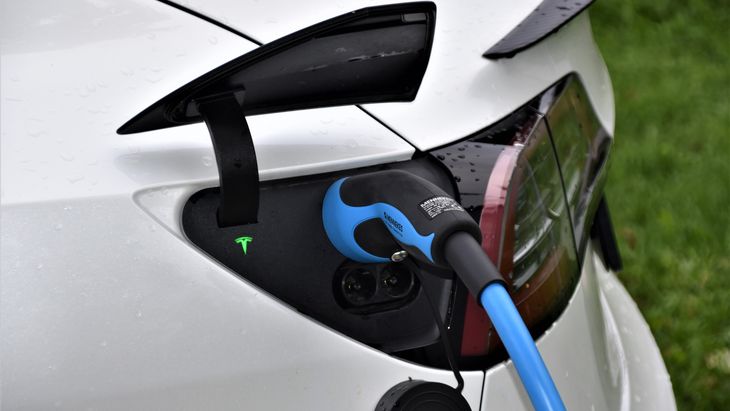Romanian companies are still determined to increase the size of their fleets. Fleet and mobility policymakers remain optimistic, with nearly 9 out of 10 companies anticipating that their fleet will remain stable or even grow over the next three years, in line with European trends.
Among the companies that anticipate an increase in their own fleets, one of the factors underlying this growth is the development of businesses, as highlighted by 64% of them. Also another factor is some innovative approaches by companies to attract and retain employees, with 30% of them offering cars to employees who are not eligible for a company car, and 31% implementing car sharing among employees.
The development of the remote work system has also had an impact on mobility policies in Romania, where 24% of companies have implemented or are considering adjustments in the future. These adjustments translate into offering ample mobility solutions to employees.
The challenges of companies in the country follow European trends, with fleet decision-makers having to make important decisions related to the transition to alternative fuel technologies and adaptation to restrictive public policies.
The results of the survey indicate that 40% of companies in Romania intend to introduce or increase the use of operational leasing in the next three years, reflecting a promising growth potential that exceeds other European countries. The use of full-service leasing is also expected to increase across all business-size categories.
According to Arval Mobility Observatory – Barometer of Fleets and Mobility 2023, 63% of Romanian companies have already implemented or are considering implementing at least one alternative technology in the next three years in their car fleet. These technologies include hybrid electric vehicles (HEV), plug-in hybrid vehicles (PHEV) and battery electric vehicles (BEV). Despite the progress in the adoption of alternative fuel technologies compared to previous years, Romanian companies are below the European average. Currently, 30% of Romanian companies use at least one alternative technology for cars, compared to the European average of 58%. Also, over 60% of Romanian companies are already using or considering adopting at least one of these technologies in the next three years, compared to the European average of 77%.
The main obstacles for Romanian companies that do not consider the adoption of battery electric vehicles are the high purchase prices and the low level of charging infrastructure. As a result, the energy transition for these companies is slower than the European level. However, economic considerations such as low fuel cost and total cost of ownership comparable to gasoline or diesel alternatives, as well as low environmental impact, remain the main reasons for accelerating the energy transition over the next three years. Currently, the most used alternative fuel technologies for cars in Romania are hybrid (16% of companies) and plug-in hybrid (14% of companies).
The study also highlights the fact that 64% of Romanian companies have already implemented at least one mobility system for their employees, while 90% of them have planned investments or intend to invest in such mobility schemes in the next three years.
“The conclusions of the Arval Mobility Observatory 2023 are gratifying, the Romanian market showing that it follows European trends despite significant gaps in terms of infrastructure. Romanian companies understand the value of a fleet of cars and even use company cars as a way to retain valuable employees. Also, the trend towards electrification is accentuated on the Romanian market, and local companies are investing in the modernization of fleets with hybrid and electric cars. There is a gap with the European market, but there are good premises for its recovery as the necessary infrastructure develops. In this sense, Arval Romania has started an action to which other local companies that operate under the umbrella of operational leasing have joined, by which we ask for the support of the Ministry of the Environment for the expansion of the Rabla + program to encourage the change of fleets, so that we can offer a viable solution to our partners who support the transition to electrification as a sustainable mobility alternative. The Arval Observatory for Mobility represents an up-to-date x-ray regarding the segment of car fleets on the Romanian market and offers us an excellent opportunity to observe trends and to be able, why not, even to anticipate them,” said Roxana Lupescu, general manager of Arval Service Lease Romania.
Public transport and car sharing are the most widespread mobility solutions in Romania, reflecting the trends observed throughout Europe. The development of mobility solutions in Romania is mainly determined by the needs related to human resources, such as the recruitment and retention of employees, the social responsibility policy of companies or increasing the attractiveness for employees. These mobility solutions are considered complementary to the company’s fleet, the probability of giving up all or part of the fleet in favor of mobility solutions remains relatively low.
The use of telematics is also increasing, following European trends. Almost half of the companies included in the survey in Romania already use connected vehicles. This trend has emerged against the backdrop of an increase in light commercial vehicle (LCV) equipment levels, with 30% of companies compared to 21% the previous year, especially in the case of medium and large companies. For small companies, the use of telematics is mainly motivated by the ability to locate the vehicle (42%), while large companies are more interested in improving operational efficiency (39%) and reducing fleet costs (36%), especially in the case of car fleets (46%).
